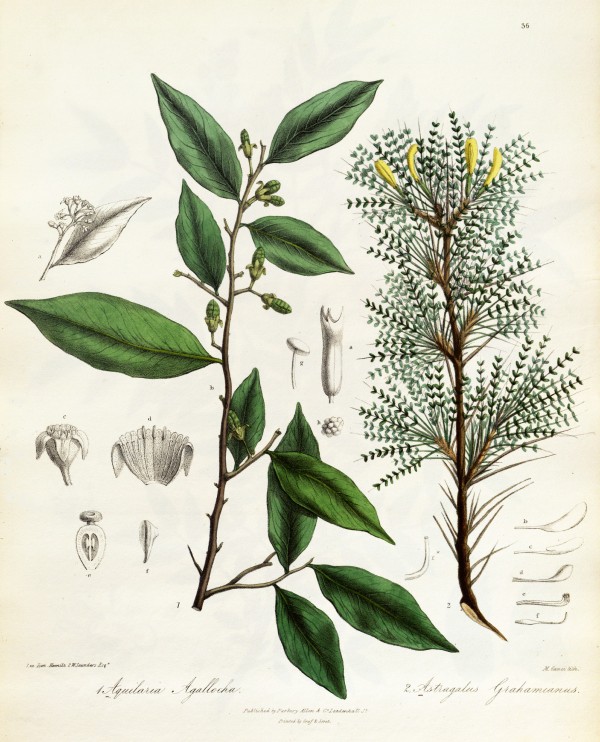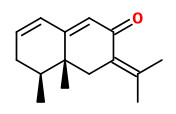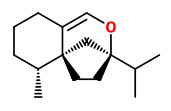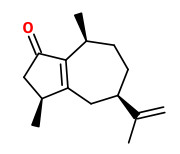Aquilaria malaccensis Lam. - syn.Aquilaria agallocha Roxb. - Thymelaeaceae - agarwood, (Malayan) eaglewood, Adlerholz
Evergreen tree, up to 40m high, native to south and Southeast Asia (Malaysia, Indonesia to India); stem up to 60cm in diameter; bark white, smooth, young twigs pale brown; leaves elliptic to lanceolate, 7.5-12cm long and 2.5-5.5cm broad; inflorescences compound, terminal and axillary; flowers petioled, bell-shaped, 5-6mm long, green to greenish-yellow; fruit obovate, 3-4cm long and 2.5cm broad.
„Aquilaria malaccensis is the major source of agarwood, a resinous heartwood, used for perfume and incense. The resin is produced by the tree in response to infection by a parasitic ascomycetous mould, Phaeoacremonium parasitica, a dematiaceous (dark-walled) fungus… “ [http://en.wikipedia.org/wiki/Aquilaria_malaccensis]]
„Both agarwood and its resin distillate/extracts are known as oud (عود) in Arabic (literally „rod/stick“) and used to describe agarwood in Arab countries. Western perfumers also often use agarwood essential oil under the name „oud“ or „oudh“.“ https://en.wikipedia.org/wiki/Agarwood
„There are 17 species of Aquilaria, which can produce agarwood. Among them A.agollocha, A.malaccensis and A.crassna are the best known. One of the main reasons for the relative rarity and high cost of agarwood is the depletion of the wild resource. The endangered A.malaccensis has been protected worldwide under the CITES convention since 1995 while all Aquilaria species have received CITES protection since 2004.“
http://www.ifeat.org/wp-content/uploads/2012/12/Pakamas-Agarwood.pdf
„http://www.agarwood.org.vn, has studied the formation of resin in Aquilaria and Gyrinops trees and found a method to produce the resin in plantation grown young trees. This technique consists of wounding trees in a specific manner and applying treatments to accelerate the natural defense responses of the tree. The technique allows a sustainable yield of resin to be produced in relatively young trees.“
http://forestpathology.cfans.umn.edu/agarwood.htm , see also
http://forestpathology.cfans.umn.edu/agarwoodadd.htm for sustainable agarwood („white oud“)
„Three fragrant sesquiterpenes have been isolated as major constituents from the wood of Aquilaria malaccensis and identified as α-agarofuran, (−)-10-epi-γ-eudesmol and oxo-agarospirol.“
[Three fragrant sesquiterpenes of agarwood., Nakanishi, T., Yamagata, E., Yoneda, K., Nagashima, T., Kawasaki, I., Yoshida, T., Miura, I., Phytochemistry, 23(9), 1984, 2066-2067]
„Seven new sesquiterpenes, all of which have a guaiane skeleton, i.e. (−)-guaia-1(10),11-dien-15-ol, (−)-guaia-1(10),11-diene-15-carboxylic acid, methyl guaia-1(10),11-diene-15-carboxylate, (+)-guaia-1(10),11-dien-9-one, (−)-1,10-epoxyguai-11-ene, (−)-guaia-1(10),11-dien-15,2-olide and (−)-rotundone, have been isolated from Aquilaria agallocha (agarwood).“
[Guaiane sesquiterpenes from agarwood., Ishihara, M., Tsuneya, T., Uneyama, K., Phytochemistry, Vol.30(10), 1991, 3343-3347]
„The Japanese are great connoisseurs of incenses and consider jinkoh, asthey name agarwood, to be the best. It is the centerpiece in the Koh-do ceremony… The chemical composition of the agarwood scent depends not only on the Aquilaria species, but also on wether the essential oil or the incense smoke is being considered… there is no doubt that the characteristic agarwood note is based on a highly complex accord of many constituents. The sesquiterpene ketones dihydrokaranone and karanone contribute very appealing oriental notes, while even the methoxy ketone 4-(4-methoxyphenyl)butan-2-one is important, with its very soft fruity-floral note, especially to the quality of the incense smoke… an experiment run under the conditions very close to those found in Koh-do ceremony illustrate well the importance of all these sesquiterpenes for the deep noble woody notes. In my opinion, rotundone… is also very important to this part of the agarwood scent.“
[Meaningful Scents around the World, Roman Kaiser, Zürich 2006, 59-64]
2,14-Epoxyvetispir-6(14)-ene is assumed to be of special importance with its sweet, woody, smoky, and agarwood-related facets.
[Scent of a vanishing flora, Roman Kaiser, 2011, 86]
„Volatile components from the essential oils of Aquilaria malaccensis, A. subintegra and A. crassna were investigated by gas chromatography (GC), gas chromatography-mass spectrometry (GC/MS), and gas chromatography-olfactometry (GC-O). A total of 31 volatile constituents were identified from the three agarwood oils. A subset of 18 out of the 31 components was identified from the essential oil of A. malaccensis with the major components being isoamyl dodecanoate, guaia-1(10),11-dien-15-ol, karanone, cyclocolorenone and jinkoheremol. Aquilaria subintegra oil yielded 28 identified compounds with the most abundant components being isoamyl dodecanoate, kusunol, jinkoh-eremol, epoxybulnesene and β-agarofuran, while 30 volatile compounds from A. crassna were identified, with isoamyl dodecanoate, β-agarofuran, kusunol, dehydrojinkoh-eremol and 9,11-eremophiladien-8-one as the main constituents. The aroma-active compounds of the three samples were analyzed by HS-SPME-GC-O. A total of 74 odor-active components were characterized by using the GC-O technique. The major components responsible for the aroma included β-agarofuran, 4-phenyl-2-butanone, furfural and benzaldehyde, while the minor aroma notes were attributed to (E)-α-bergamotene, α-humulene, α-bulnesene, α-agarofuran, nor-ketoagarofuran, epoxybulnesene, agarospirol, jinkoh-eremol, kusunol, acorenone B, selina-3,11-dien-14-al and 9,11-eremophiladien-8-one, considered to be the most important aroma impact compounds for the characteristic aroma of agarwood essential oils.“
[Identification of odor-active components of agarwood essential oils from Thailand by solid phase microextraction-GC/MS and GC-O., Pripdeevech, P., Khummueng, W., Park, S.K., Journal of Essential Oil Research, Vol.23(4), 2011, 46-53]
SPME/GC-MS and Z-score techniques have been applied to analyze the volatile components of high quality samples of agarwood oil from Malaysia. 10-Epi-γ-eudesmol, aromadendrane, β-agarofuran, α-agarofuran and γ-eudesmol were highlighted as significant for high quality agarwood oil and may be used in classifying it.
[Analysis of high quality agarwood oil chemical compounds by means of SPME/GC-MS and Z-score technique., Ismail, N., Azah, M.A.N., Jamil, M., Rahiman, M.H.F., Tajuddin, S.N., Taib, M.N., Malaysian Journal of Analytical Sciences, 17(3), 2013, 403-413]
„…the question of the identity of the key odorants of agarwood is still unresolved, because the chemical complexity and the variability of this material together prevent any “simple” answer. An extensive survey on commercial agarwood essential oil samples of different origins reveals an impressive diversity in their olfactory character, even if their chemical composition is often roughly similar. This situation is possibly due to the participation of poorly characterized trace constituents in the subtle harmony of the agarwood odor. In addition, many odorant components described in early studies are not detected in conventional agarwood essential oils but occasionally reappear in some atypical samples. A consideration of the odor of burned agarwood adds another layer of complexity to this question, as a similar variability exists also in the smell of the smoke obtained from different agarwood samples.“
[Baldovini, Nicolas. „The chemistry of agarwood odorants.“ Progress in the Chemistry of Organic Natural Products 118. Cham: Springer International Publishing, 2022. 47-100]
„Traditionally, the bark, root and heartwood are used for their medicinal properties as a folk medicine for hundreds of years. Chemical analyses revealed that the bulk of the oil is constituted by agarospirol (12.5%), jinkoh-eremol (11.8%) and hinesol (8.9%) as major contributor. In the present work, a QSAR model for antiinflammatory activity of 10-epi-γ-Eudesmol, jinkoh-eremol, agarospirol and other compounds has been developed by multiple linear regression method… The present study indicates that agarwood oil significantly reduced the skin thickness, ear weight, oxidative stress and pro-inflammatory cytokines production in TPA-induced mouse ear inflammation model and contributed towards validation of its traditional use to treat inflammation related ailments.“
[Molecular docking and ADME studies of natural compounds of Agarwood oil for topical anti-inflammatory activity., K Yadav, D., Mudgal, V., Agrawal, J., K Maurya, A., U Bawankule, D., S Chanotiya, C., Thul, S., Current computer-aided drug design, Vol.9(3), 2013, 360-370]

left: Aquilaria malaccensis Lam. as Aquilaria agallocha Roxb.
Royle,J.F., Illustrations of the botany and other branches of the natural history of the Himalayan Mountains and of the flora of Cashmere, Plates, vol.2 t.36 (1839) [Hamilton]
http://plantgenera.org/species.php?id_species=76628



